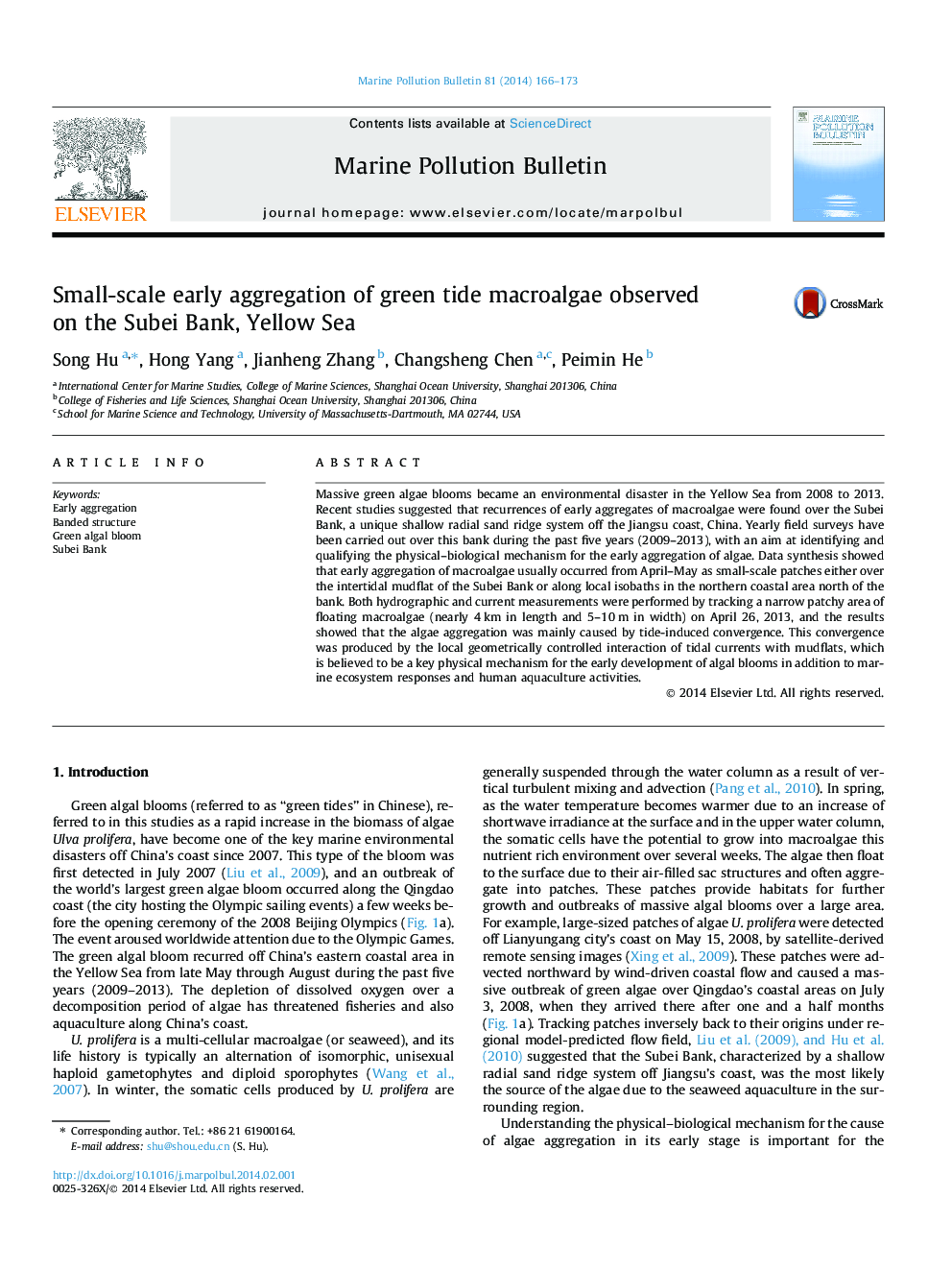| Article ID | Journal | Published Year | Pages | File Type |
|---|---|---|---|---|
| 6358622 | Marine Pollution Bulletin | 2014 | 8 Pages |
â¢In situ observations of early aggregation of macroalgae over Subei Bank from 2009 to 2013.â¢1-10 km in length and 10-20 m in width.â¢Along the isobaths or coastline of mudflat, closely related to tidal current and mudflat topography.
Massive green algae blooms became an environmental disaster in the Yellow Sea from 2008 to 2013. Recent studies suggested that recurrences of early aggregates of macroalgae were found over the Subei Bank, a unique shallow radial sand ridge system off the Jiangsu coast, China. Yearly field surveys have been carried out over this bank during the past five years (2009-2013), with an aim at identifying and qualifying the physical-biological mechanism for the early aggregation of algae. Data synthesis showed that early aggregation of macroalgae usually occurred from April-May as small-scale patches either over the intertidal mudflat of the Subei Bank or along local isobaths in the northern coastal area north of the bank. Both hydrographic and current measurements were performed by tracking a narrow patchy area of floating macroalgae (nearly 4Â km in length and 5-10Â m in width) on April 26, 2013, and the results showed that the algae aggregation was mainly caused by tide-induced convergence. This convergence was produced by the local geometrically controlled interaction of tidal currents with mudflats, which is believed to be a key physical mechanism for the early development of algal blooms in addition to marine ecosystem responses and human aquaculture activities.
